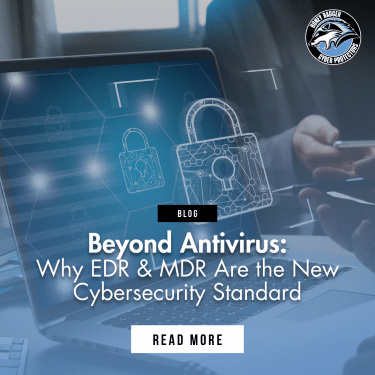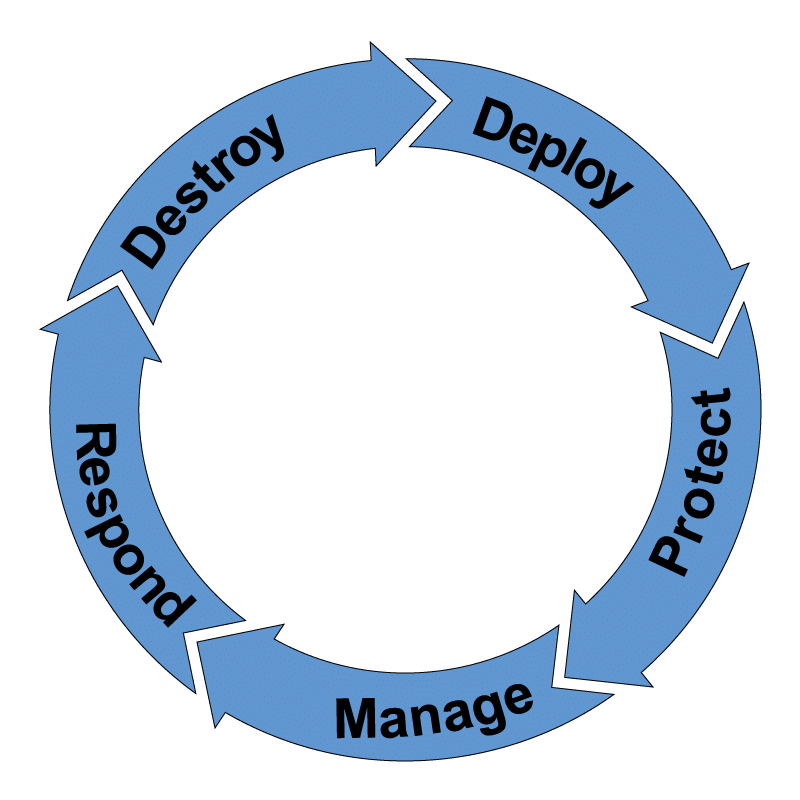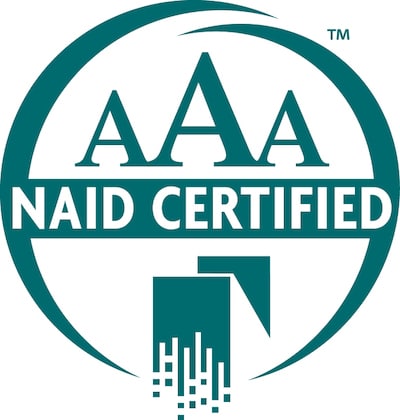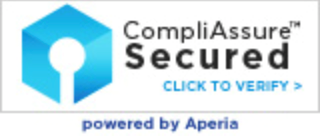Beyond Antivirus: Why EDR & MDR Are the New Cybersecurity Standard
 In the not-so-distant past, antivirus software was the default answer to the cybersecurity question. A recognizable name, an annual subscription, and that trusty green checkmark meant you were “protected.” Or so it seemed.
In the not-so-distant past, antivirus software was the default answer to the cybersecurity question. A recognizable name, an annual subscription, and that trusty green checkmark meant you were “protected.” Or so it seemed.
Today, the digital battlefield has evolved. Antivirus alone isn’t just outdated, it’s dangerously inadequate. In regulated industries, where compliance and data protection are non-negotiable, relying on traditional tools is like locking your front door while leaving the windows wide open. That’s why EDR (Endpoint Detection and Response) and MDR (Managed Detection and Response) have become the new cybersecurity standard, not just for enterprise organizations, but for every business that holds sensitive data, answers to regulators, or depends on digital continuity.
The Evolution of Threats
Cybercriminals have advanced far beyond basic malware. They now leverage zero-day vulnerabilities, phishing-as-a-service kits, and legitimate tools like PowerShell and RDP to infiltrate and maintain persistence within an organization’s environment. The modern attacker isn’t interested in being noticed. They want time, time to exfiltrate, encrypt, or manipulate data with precision.
These threat actors often avoid traditional malware signatures altogether. Instead, they use fileless attacks, social engineering, and living-off-the-land techniques that antivirus software simply isn’t built to detect. The result is a dangerous gap in coverage, one that can leave businesses exposed for days, weeks, or even months without detection.
Why Antivirus Alone Fails
Antivirus tools work by identifying known threats based on signature databases or heuristics. While useful for catching common malware strains, they struggle with:
- Sophisticated, multi-stage attacks that unfold over time
- Unknown or zero-day threats that haven’t been catalogued yet
- Insider threats or credential misuse that doesn’t involve malware
- Lateral movement across the network once a single endpoint is compromised
Relying on antivirus is akin to guarding the front door while leaving no surveillance inside the building. Once a threat slips in, there’s little visibility into what it’s doing or how to stop it.
What is EDR and Why Does It Matter?
Endpoint Detection and Response (EDR) is a cybersecurity solution that continuously monitors endpoint activity (laptops, servers, mobile devices) for signs of malicious behavior. Unlike antivirus, EDR is behavior-based. It doesn’t just search for known threats. It observes and evaluates patterns that may indicate compromise.
Key capabilities of EDR include:
- Real-time visibility into endpoint activity
- Behavioral analytics to detect anomalies
- Automatic containment of suspicious processes
- Root cause analysis and attack timeline
- Forensic data collection for post-incident review
EDR empowers internal IT and security teams with tools to detect, investigate, and respond quickly, often before the threat escalates into a full-blown breach.
Why EDR Isn’t Enough on Its Own
While EDR provides vital visibility and control, deploying it without a dedicated security team to monitor and interpret alerts can be risky. Many organizations quickly find themselves overwhelmed by noise, unsure how to distinguish between false positives and real threats. Without 24/7 attention and expert guidance, even the best tools can underperform.
That’s where Managed Detection and Response (MDR) enters the picture.
What is MDR and How Does It Work?
MDR pairs best-in-class EDR technology with a team of cybersecurity professionals who monitor, analyze, and respond to threats on your behalf. It’s like adding a fully staffed Security Operations Center (SOC) to your business without the overhead.
A true MDR partner delivers:
- Around-the-clock monitoring and threat detection
- Expert-led threat hunting and incident analysis
- Real-time triage and prioritization of alerts
- Support for incident response and recovery
- Strategic recommendations to reduce future risk
Instead of relying on overburdened internal staff, MDR clients benefit from deep cybersecurity expertise, threat intelligence, and fast containment all tailored to their environment.
The Stakes Are Higher for Regulated Businesses
For organizations subject to regulatory oversight (like healthcare, financial services, government contractors, and education) EDR and MDR are no longer optional. They are essential for:
- Compliance with frameworks like HIPAA, GLBA, CMMC, and PCI-DSS
- Cyber insurance eligibility, which increasingly requires advanced detection capabilities
- Reputation management, particularly in the aftermath of a breach
- Business continuity, ensuring that attacks don’t derail operations for days or weeks
When a cyber incident occurs, regulators want answers. What happened? When did it start? What data was affected? EDR and MDR provide the detailed logging, forensic trails, and expert support needed to respond confidently and accurately.
Reclamere’s SOC360: A Modern Response for Modern Threats
At Reclamere, we know that cybersecurity isn’t just about tools, it’s about outcomes. That’s why we developed SOC360, our comprehensive managed detection and response solution.
SOC360 integrates leading EDR platforms with Reclamere’s own team of certified security analysts. Our clients benefit from:
- 24/7/365 endpoint monitoring
- Behavioral threat detection tuned to their specific risk profile
- Customized playbooks and response procedures
- Post-incident analysis and strategic hardening
- Ongoing consultation with cybersecurity professionals who know their environment
This isn’t a cookie-cutter service. It’s a fully managed cybersecurity experience, designed for businesses that understand the risks, and want to stay ahead of them.
An Everyday Example from the Field
We often see businesses that believe antivirus is still “good enough.” A staff member clicks a phishing link, launching a fileless attack that evades detection. Hours go by. Then days. Eventually, systems slow, credentials are harvested, and files are encrypted in a ransomware event.
When these organizations call Reclamere, the regret is clear: “We didn’t know. We thought we were covered.”
Had EDR and MDR been in place, the abnormal behavior could have been flagged and isolated immediately. Instead of a full shutdown, the business might have experienced a momentary investigation and containment. That’s the difference strategic detection makes.
Why Now Matters
Cybercriminals don’t wait. They evolve. They test defenses. They target small businesses as often as large enterprises, looking for gaps they can exploit.
If your organization is still relying on antivirus alone, it is not only falling behind but also at risk.
By investing in EDR and MDR now, you’re not just meeting today’s standards. You’re preparing for tomorrow’s threats, satisfying compliance requirements, protecting your stakeholders, and securing the future of your business.
Final Thought: From Protection to Proactive Defense
Cybersecurity is no longer just about avoiding a breach. It’s about building the kind of proactive, responsive defense posture that keeps your organization resilient.
EDR and MDR are the tools that move you from reactive to ready. And Reclamere’s SOC360 ensures you don’t have to do it alone.
The time to go beyond antivirus is now. Get started today!








